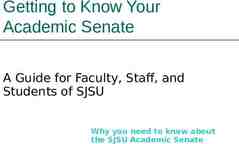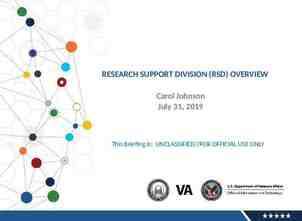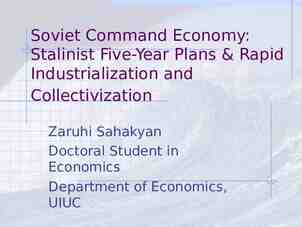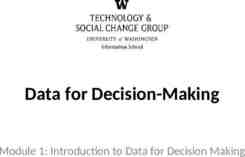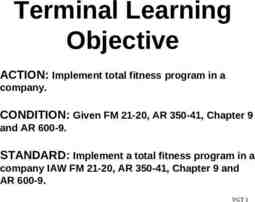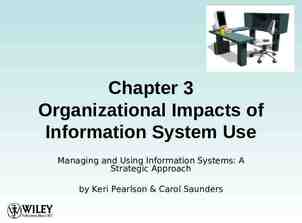Circumventing Basic Skills: Hartnell College K-12 STEM Programs
30 Slides7.45 MB
Circumventing Basic Skills: Hartnell College K-12 STEM Programs Shannon Bliss – Dean of Academic Affairs, STEM Maggie Melone – Director of K12 STEM Programs Claudia Maciel – Academic Coordinator, K12 STEM Programs March 14th, 2017
Who we are Hartnell College serves the Salinas Valley, a fertile agricultural region some 10 miles wide and 100 miles long. The College draws most of its students from Salinas and the surrounding communities of Castroville, Chualar, Gonzales, Soledad, Greenfield, King City, and adjacent rural areas.
Regional Demographics 16,000 students annually (unduplicated headcount) In 2015-16, over 700 “Dreamer” students enrolled (291 enrolled in 2010-11) 56% first generation students (5th highest of 113 California community colleges) 85% receive financial aid 68% of students are Latino/Hispanic About 90% of all students take at least one remedial course in English or math 39% of adults over 25 years old do not have a high school diploma Only 6% of Latinos in the Hartnell CCD have a bachelor’s degree or higher (75% Latinos in Hartnell CCD) Salinas identified in a 2014 Forbes study as the second least educated city in the United States (10th in 2016)
NASA MAA High School Biology class, Summer Camp 2016Alisal Campus.
Timeline * NASA SEMAA is awarded 2011 * CoderDojo Salinas Starts 2012 2013 * 1st School District Contract 2014
Timeline * NASA MAA Awarded * K12 STEM Institutionalized 2015 * Pilot Intro to Coding * Added 2nd School District Contract 2016 * Expanded CoderDojo Hartnell College to 7 sites 2017
K-12 STEM Programs Mission Statement We provide dense STEM, hands-on experiences for thousands of Kinder to 12th grade students, incorporating advanced technology and family involvement, feeding the already successful STEM pathways in the Salinas Valley.
Our Core Principles - Out of School Time Up to 36 hours of in depth, hands-on, critical thinking content, separated by grades and ages according to program NASA Aerospace Educational Lab Supplies NGSS & Common Core Aligned curriculum No cost to participants Family involvement Professional Development for teachers Teacher Stipend
Our Friend the Astronaut
NASA Curriculum Enhanced Activities Foundation of everything we do All grades have the same format for their curriculum: Table of Contents Title for week/day Mission Role Estimated Time for Mission Mission Outcomes Mission Objectives – Math, Science, Technology, Career Mission Background Mission Resources – websites, books, videos, etc Mission Vocabulary Mission Supplies Mission Preparation Mission Procedures Mission Debriefing/Assessment Mission Career Application Follow up Mission
Salinas City Summer Camp, 2016 – NASA MAA Visit to the Aerospace Educational Lab
Sample Living and Working in Space Living and Working in Space Instructor Guide Kindergarten, Week 1 Reaching for the Moon, A Stepping Stone to the Stars K in d e r g a r t e n Instructor G u i d e Table of Contents Reaching for the Moon, A Stepping Stone to the Stars. 2 Part I. 5 Core Mission Mission Role: Rocketeers Estimated Time of Mission: 90 minutes (45 minutes for Part I) (45 minutes for Part II) Part II . 7 Our Neighbors in Space . 10 Part I. 15 Part II . 16 Part III . 18 Beginning the Journey. 20 Blasting Off . 44 Mission Outcomes: The students will: Describe the Moon’s characteristics Compare and contrast the Moon with Earth Mission Objectives: Earth and Moon Mural . 52 Developing concepts of systems, order, and organization Green Cheese and the Moon . .55 Utilization of models, evidence, and explanations Astronaut Bears . 60 Ability to use inquiry and understand science as inquiry Star Light, Star Bright . 63 Earth and space science concepts of objects in the sky and changes in earth and sky Astronaut Bears (Part 2) . 66 Fit to be an Astronaut . 72 Astronaut Bears (Part 3) . 76 Rocket Scientist . 79 Science (NSES) Mathematics (NCTM) Mathematics as communication Estimation Number sense and numeration Geometry and spatial sense Measurement
Each class lasts 4.5 hours Time Spent 55 45 35 25 M h at 25 25 30 20 20 s g y n n ts ry ce n g n r o o i o n o o A ti l s d ti st a ie a o i d e t a c e H S ag R an hn or en l c u s H xp t/ re Te ng r E P a A r L e re a C
Kinder Students working with parents Family Café Event –Alisal Union School District
Hands-on Experience / It’s your turn to learn!
The Fascinating world of Coding CoderDojo is a global collaboration providing free and open learning to young people, especially in programming technology. CoderDojo Hartnell College has a twist: Structured (6 weeks, 3 hours per session) Fully staffed/ Budget Fully staffed Fixed sessions (3 per year) 7 locations in Monterey County
Our Students in action
Process and Curriculum Online application (we capture data for reporting purposes) First come-First serve Inclusive Partnerships with school districts – site selection by district Beginner: Introduction to Computer Programming. Use of 3rd party programs ie scratch, pencilcode, Google CSfirst Intermediate: Binary introduction, HTML, Java script, Python, etc. Black Belts: By invitation only - Project Based. Hands-on Activities for all
Teaching strategy Curriculum Compilation CoderDojo HC Participant Learns Training by K12 STEM Service Learners Students Rotates CSUMB CS Student Lead Hartnell CS Student Assistant
Coding before Reading Introduction to Coding – Alisal Union School District Pilot Program, Spring 2016
Innovative new program Special Curriculum designed for students in grades Kinder to 6th Basic understanding of the world of computers Learning to type Elementary teachers trained for program Combines computer time with fun outdoor physical activities
Based on NASA program structure At students’ school 6 Saturdays for 4.5 hours Small class (up to 25 students) Skills based, not age Three classes per school K-1st / 2nd-3rd / 4th to 6th One computer (laptop, chromebook) per student Preparation for future job interest Curriculum includes industry applications Local interest in AgTech
Intro to Coding – Alisal Union School District Pilot Program, Spring 2016
Demographics Ethnicity 0% 5% 0% 4% 3% Hispanic/Latino/a American Indian/Alaska Native Asian Black/African American Native Hawaiian/Pacific Islander White Non-Hispanic No response 0% 87%
Gender Gender Female 52% Male 48%
Participation over the years 8000 7000 6000 5000 4000 Number of Participants 3000 2000 1000 0 2011 2012 2013 2014 2015 2016 2017
5th grade class, Introduction to Coding- Summer Camp 2016Alisal Campus
What’s Next / Strategic Growth Create New Curriculum – Life Science based on our locality: Agriculture and Ocean Creation of Advisory Committee Mine existing curriculum: online, Monterey Bay Aquarium, etc. Incorporate NASA complexity/Structure New programs ?
3rd Grade student – Summer Camp 2016 - NASA MAA
Q&A Thank you www.hartnell.edu/k12 www.facebook.com/HartnellMAA www.facebook.com/CoderDojoHartnellCollege


